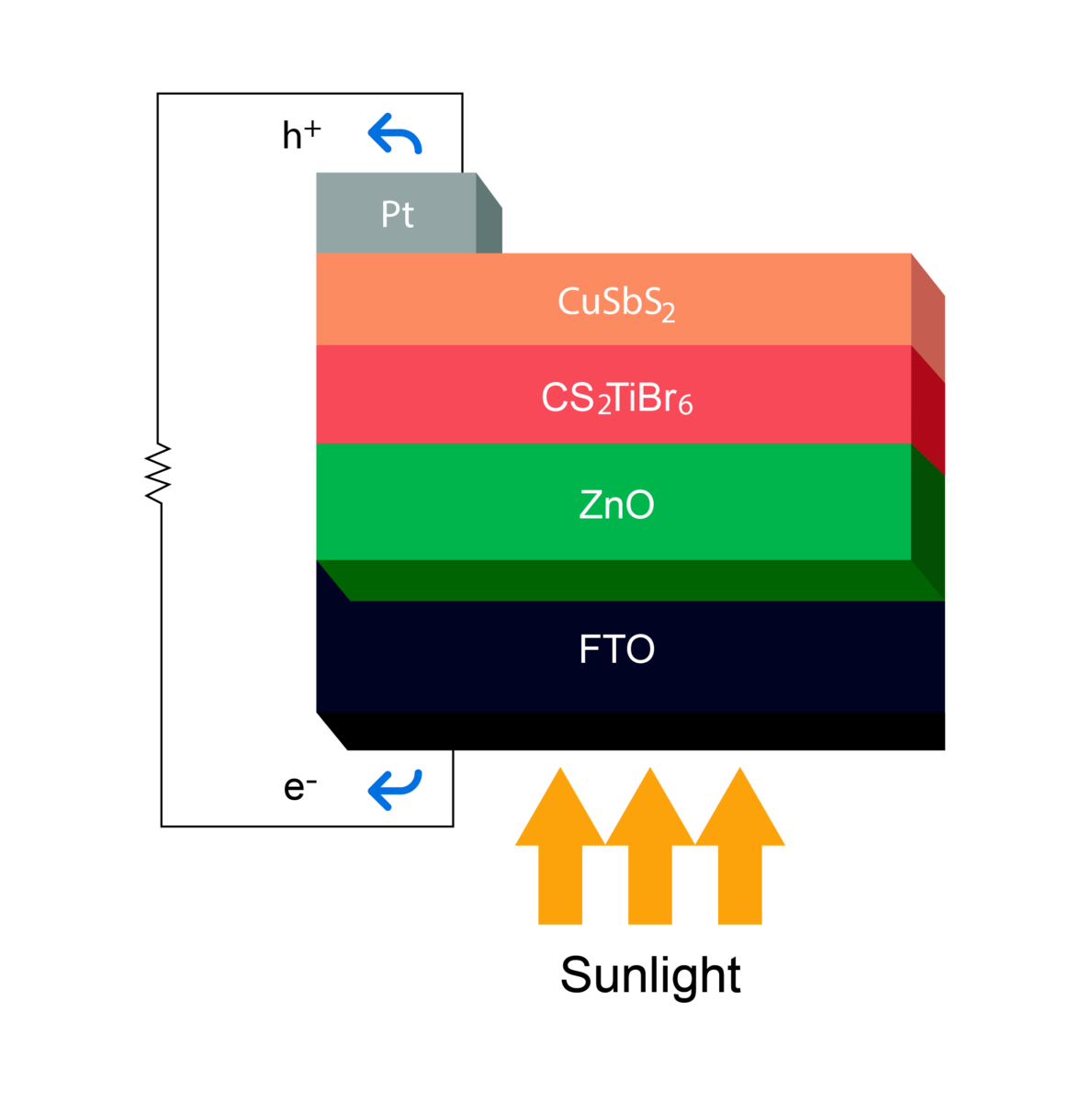Scientists from the Rajshahi University of Engineering and Technology in Bangladesh have designed a lead-free titanium-based inorganic perovskite solar cell (PSC) based on a cesium titanium (IV) bromide (Cs2TiBr6) perovskite absorber.
The scientists optimized a perovskite solar cell using SCAPS-1D solar cell capacitance software, developed by the University of Ghent. The cell features a hole transport layer (HTL) of copper and antimony trisulfide (CuSbS2). It also has various electron transport layer (ETL) configurations, including indium gallium zinc oxide (IGZO), zinc oxide (ZnO), CeOx, tungsten disulfide (WS2), phenyl-C61-butyric acid methyl ester (PCBM), and cadmium telluride (CdTe).
The researchers fine-tuned the cell by analyzing factors such as thickness, carrier density, defect density, bandgap, temperature, and resistance.
The optimized cell used a fluorine-doped tin oxide (FTO) substrate, a ZnO ETL, and achieved a 26.96% efficiency with an open-circuit voltage of 1.0478 V, 31.6486 mA/cm2 short-circuit density, and an 81.35% fill factor under standard illumination.
Popular content
“Results also indicate that the IGZO and CeOx are showing a similar performance as compared to ZnO,” the scientists said in the paper, adding that the ideal energy bandgap of the perovskite absorber layer was 1.4 V. “Due to its decreased ability to absorb sunlight, a device with an absorber bandgap that is larger or lower than the optimal value of 1.4 eV is undesirable for solar cell applications.”
They described the new cell design in “Numerical investigation of lead free Cs2TiBr6 based perovskite solar cell with optimal selection of electron and hole transport layer through SCAPS-1D simulation,” which was recently published in Results in Optics.
“It is expected that this study's results will play a role in the development of reliable and highly efficient PSCs that are free from the use of lead or any other type of toxic materials,” the paper concluded.
This content is protected by copyright and may not be reused. If you want to cooperate with us and would like to reuse some of our content, please contact: editors@pv-magazine.com.



By submitting this form you agree to pv magazine using your data for the purposes of publishing your comment.
Your personal data will only be disclosed or otherwise transmitted to third parties for the purposes of spam filtering or if this is necessary for technical maintenance of the website. Any other transfer to third parties will not take place unless this is justified on the basis of applicable data protection regulations or if pv magazine is legally obliged to do so.
You may revoke this consent at any time with effect for the future, in which case your personal data will be deleted immediately. Otherwise, your data will be deleted if pv magazine has processed your request or the purpose of data storage is fulfilled.
Further information on data privacy can be found in our Data Protection Policy.